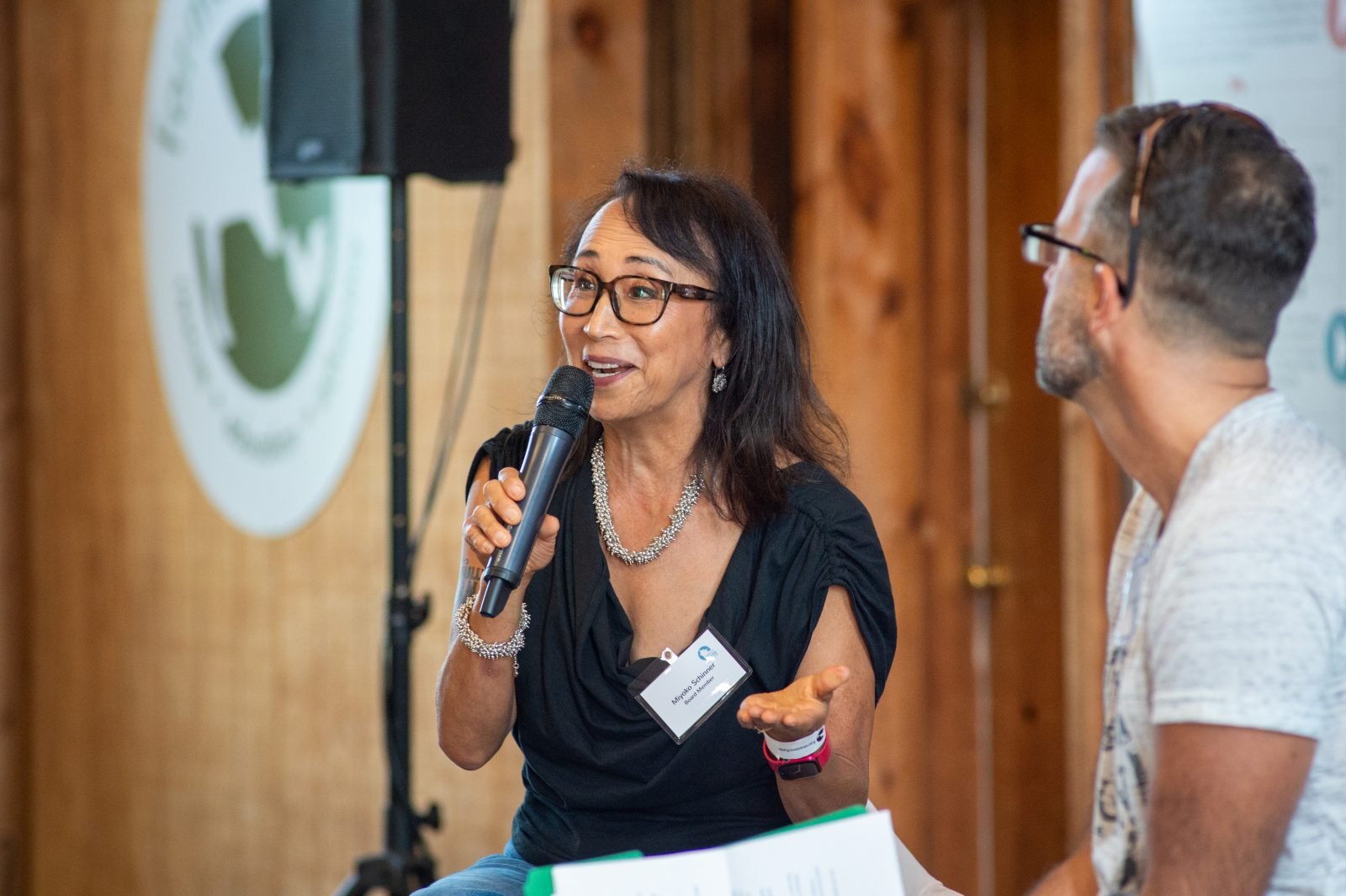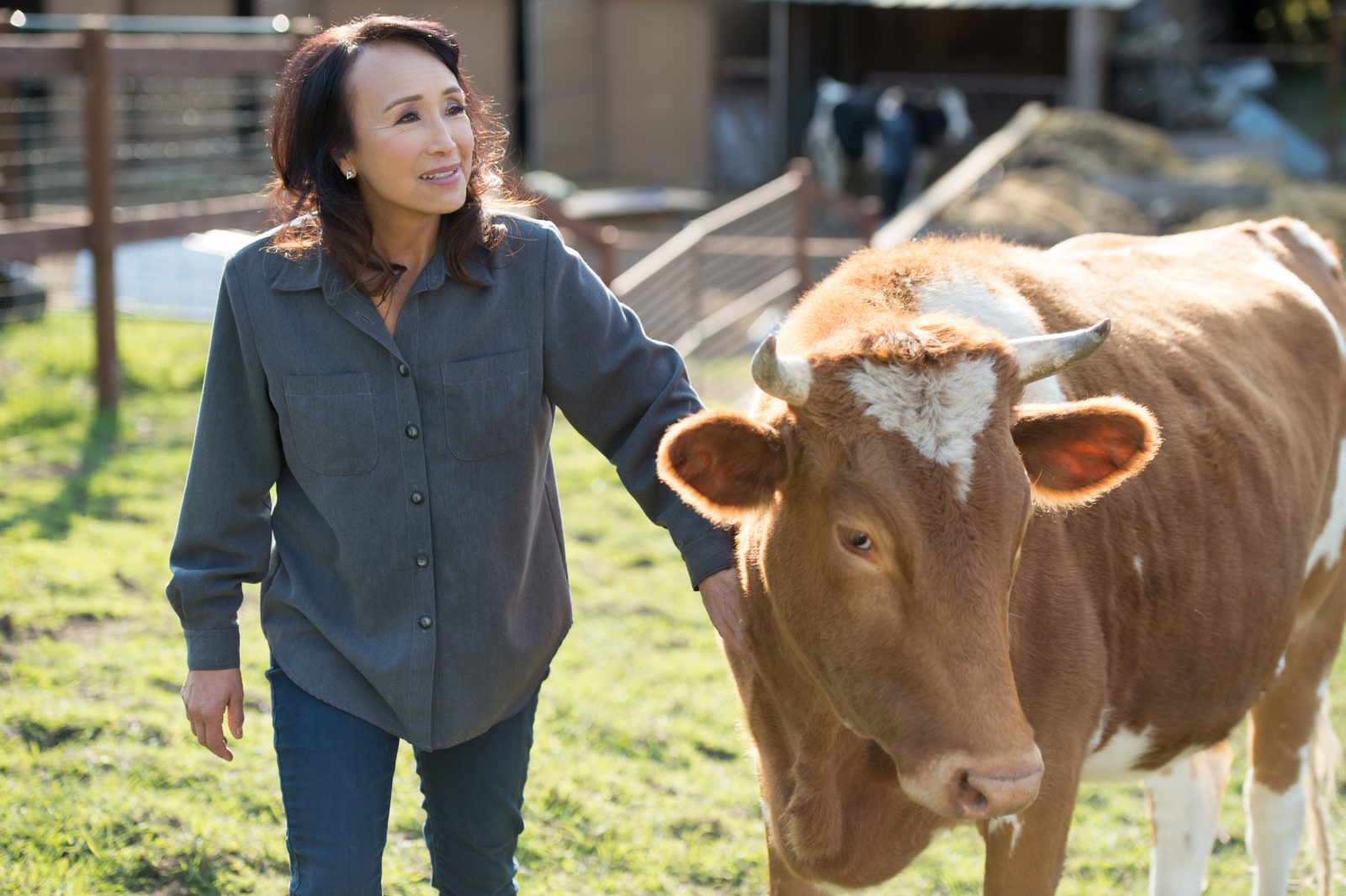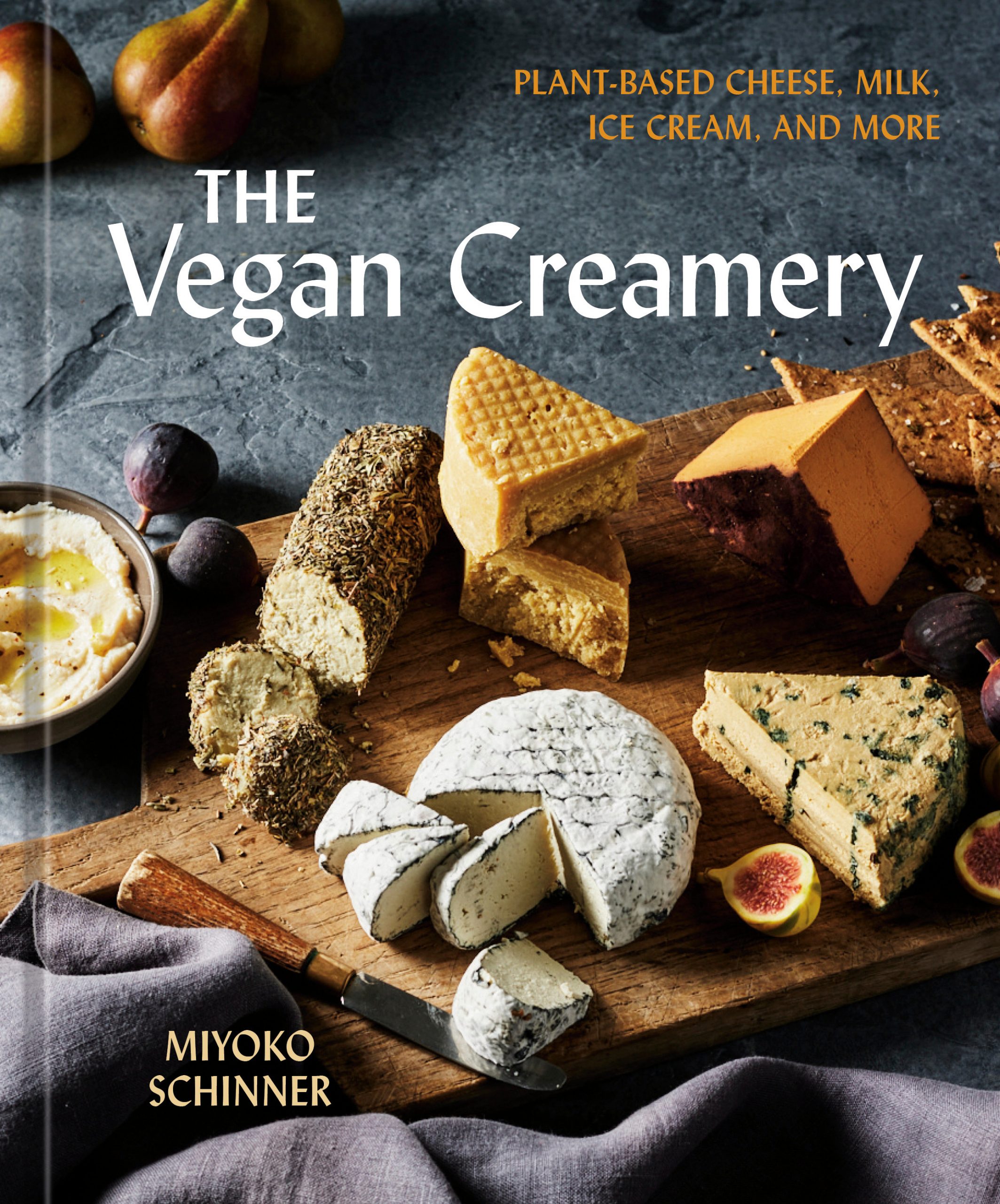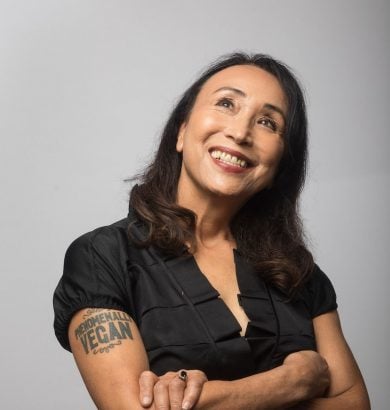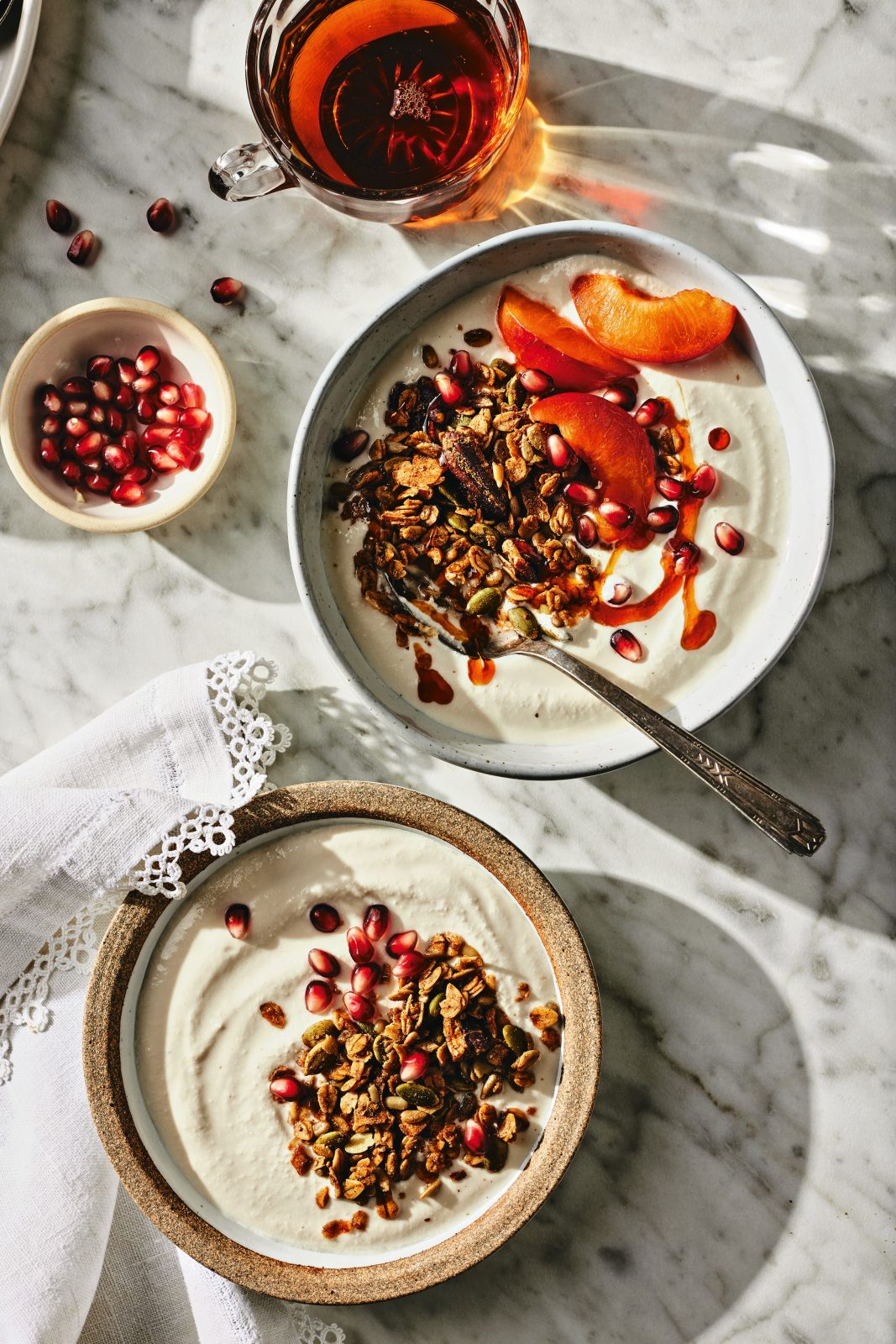Farm Sanctuary: What moved you to establish a farm animal sanctuary, Rancho Compasión, and what role do you feel sanctuaries play in inspiring plant-based living?
Miyoko Schinner: Well, this is our 10th anniversary! What started as me taking care of a couple of stray goats, then three little pigs, then a goat and sheep couple (Benny and Joon, actually from Farm Sanctuary) has become a Bay Area hub for youth education. Our Friends and Food Program focuses on diverse youth aged five and up from around the Bay Area, including underserved communities and those with special needs, connecting them to animals and our organic garden. Last year, about 500 kids came through the program (on site), and this year, we are aiming to double that reach through our summer camps, afterschool enrichment programs, and field trips.
Unlike most humane education programs, we don’t actively teach about animal agriculture or veganism, but let the animals be the ambassadors. We have found this to be very effective, and have actually had many students become vegan or vegetarian.
Studies have shown direct animal interactions to be one of the most effective stimuli for conversion to veganism. Providing a safe haven for all—the animals and the youth that visit—and allowing them to discover and reflect on their own has had a huge impact not only on the students but also on their parents, who often tell us that they are eliminating animal foods from their own diets.



